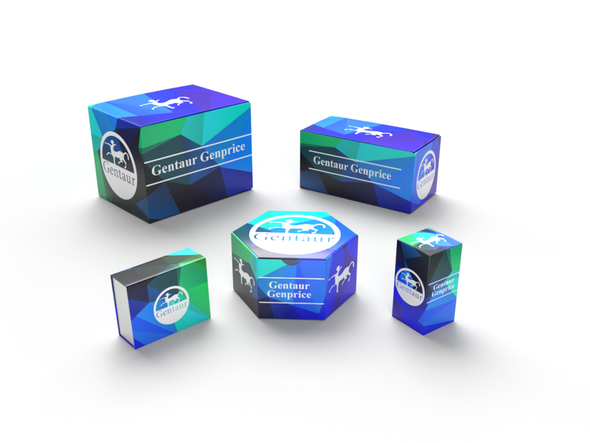Description
EphA10 Antibody | 5253 | Gentaur UK, US & Europe Distribution
Host: Rabbit
Reactivity: Human, Mouse, Rat
Homology: N/A
Immunogen: EphA10 antibody was raised against a 14 amino acid synthetic peptide of near the amino terminus of human EphA10.
The immunogen is located within amino acids 120 - 170 of EphA10.
Research Area: Signal Transduction
Tested Application: E, WB
Application: EphA10 antibody can be used for detection of EphA10 by Western blot at 1 - 2 μg/mL.
Antibody validated: Western Blot in human samples. All other applications and species not yet tested.
Specificiy: N/A
Positive Control 1: Cat. No. 1210 - HEK293 Cell Lysate
Positive Control 2: N/A
Positive Control 3: N/A
Positive Control 4: N/A
Positive Control 5: N/A
Positive Control 6: N/A
Molecular Weight: N/A
Validation: N/A
Isoform: N/A
Purification: EphA10 Antibody is affinity chromatography purified via peptide column.
Clonality: Polyclonal
Clone: N/A
Isotype: IgG
Conjugate: Unconjugated
Physical State: Liquid
Buffer: EphA10 Antibody is supplied in PBS containing 0.02% sodium azide.
Concentration: 1 mg/mL
Storage Condition: EphA10 antibody can be stored at 4˚C for three months and -20˚C, stable for up to one year. As with all antibodies care should be taken to avoid repeated freeze thaw cycles. Antibodies should not be exposed to prolonged high temperatures.
Alternate Name: EphA10 Antibody: Ephrin type-A receptor 10
User Note: Optimal dilutions for each application to be determined by the researcher.
BACKGROUND: EphA10 Antibody: Eph receptors, the largest subfamily of receptor tyrosine kinases (RTKs) , and their ephrin ligands are important mediators of cell-cell communication regulating cell attachment, shape, and mobility of neuronal and endothelial cells in central nervous system function and in development. Eph receptors can be divided into two subgroups: EphA and EphB. In mammals, the EphA class consists of eight members (EphA 1-7 and 10) that in general bind to ephrin-A members linked to the cell membrane through a glycosylphosphatidylinositol linkage. The EphB class consists of six members (EphB 1-6) that in general bind ephrin-B members that transverse the cell membrane. The Ephrin / EPH signaling pathway networks with the WNT signaling pathway during embryogenesis, tissue regeneration, and carcinogenesis. Recent studies show that Eph/EFN might be relevant in normal B-cell biology and could represent new potential prognostic markers and therapeutic targets for CLL.






